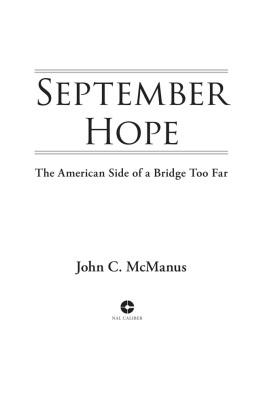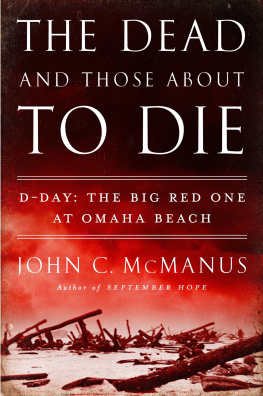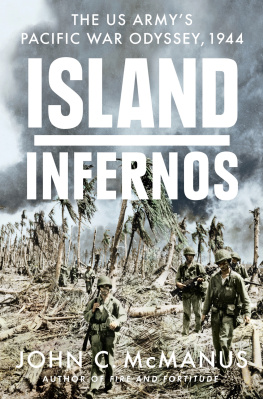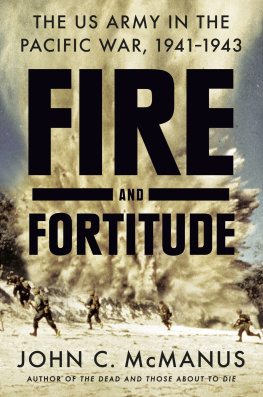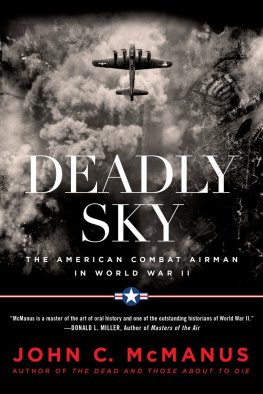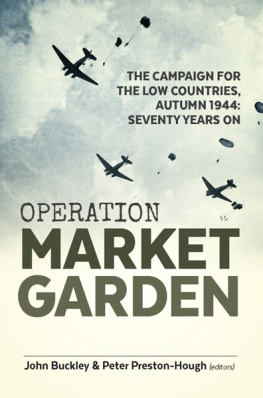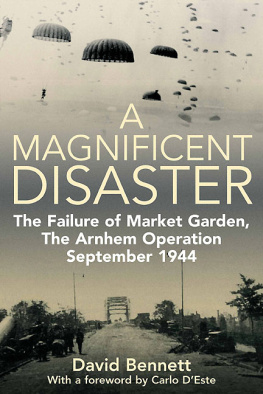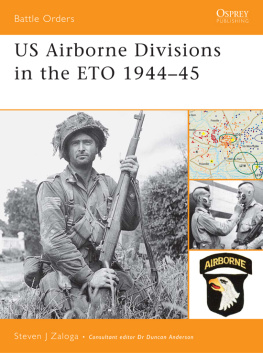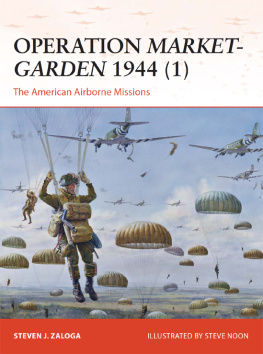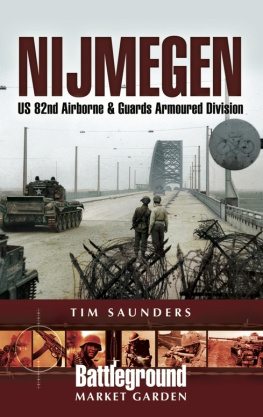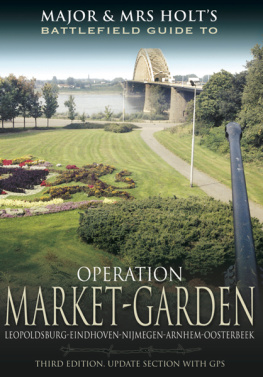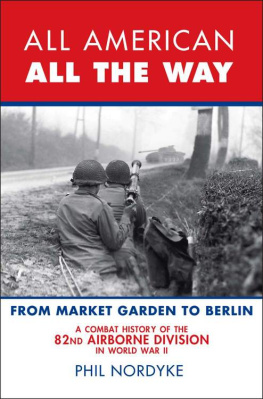Also by John C. McManus
Grunts:
Inside the American Infantry Combat Experience, World War II Through Iraq
American Courage, American Carnage:
The 7th Infantry Regiments Combat Experience, 1812 Through World War II
The 7th Infantry Regiment:
Combat in an Age of Terror, the Korean War Through the Present
U.S. Military History for Dummies
Alamo in the Ardennes:
The Untold Story of the American Soldiers Who Made the Defense of Bastogne Possible
The Americans at Normandy:
The Summer of 1944The American War from the Normandy Beaches to Falaise
The Americans at D-Day:
The American Experience at the Normandy Invasion
Deadly Sky:
The American Combat Airman in World War II
The Deadly Brotherhood:
The American Combat Soldier in World War II
S EPTEMBER
H OPE
The American Side of a Bridge Too Far
John C. McManus
NAL C ALIBER
Published by New American Library, a division of
Penguin Group (USA) Inc., 375 Hudson Street, New York, New York 10014, USA
Penguin Group (Canada), 90 Eglinton Avenue East, Suite 700, Toronto, Ontario M4P 2Y3, Canada (a division of Pearson Penguin Canada Inc.)
Penguin Books Ltd., 80 Strand, London WC2R 0RL, England
Penguin Ireland, 25 St. Stephens Green, Dublin 2, Ireland (a division of Penguin Books Ltd.)
Penguin Group (Australia), 250 Camberwell Road, Camberwell, Victoria 3124, Australia (a division of Pearson Australia Group Pty. Ltd.)
Penguin Books India Pvt. Ltd., 11 Community Centre, Panchsheel Park, New Delhi - 110 017, India
Penguin Group (NZ), 67 Apollo Drive, Rosedale, Auckland 0632, New Zealand (a division of Pearson New Zealand Ltd.)
Penguin Books (South Africa) (Pty.) Ltd., 24 Sturdee Avenue,
Rosebank, Johannesburg 2196, South Africa
Penguin Books Ltd., Registered Offices:
80 Strand, London WC2R 0RL, England
First published by NAL Caliber, an imprint of New American Library,
a division of Penguin Group (USA) Inc.
First Printing, June 2012
Copyright John C. McManus, 2012
Unless otherwise noted, maps Rick Britton, 2013
All rights reserved. No part of this book may be reproduced, scanned, or distributed in any printed or electronic form without permission. Please do not participate in or encourage piracy of copyrighted materials in violation of the authors rights. Purchase only authorized editions.
NAL CALIBER and the C logo are trademarks of Penguin Group (USA) Inc.
LIBRARY OF CONGRESS CATALOGING-IN-PUBLICATION DATA:
McManus, John C., 1965
September hope: the American side of a bridge too far/John C. McManus.
p. cm.
Includes bibliographical references and index.
ISBN 978-1-101-58539-9
1. Arnhem, Battle of, Arnhem, Netherlands, 1944. 2. World War, 19391945CampaignsNetherlands. 3. World War, 19391945Aerial operations, American. 4. United States. Army. Airborne Division 82ndHistory. 5. United States. Army. Airborne Division 101stHistory. I. Title.
D763.N42A7356 2012
940.54'219218dc23 2011053222
PUBLISHERS NOTE
While the author has made every effort to provide accurate telephone numbers and Internet addresses at the time of publication, neither the publisher nor the author assumes any responsibility for errors, or for changes that occur after publication. Further, publisher does not have any control over and does not assume any responsibility for author or third-party Web sites or their content.
Version_2
C ONTENTS
In the years to come everyone will remember Arnhem, but no one will remember that two American divisions fought their hearts out in the Dutch canal country and whipped hell out of the Germans.
L IEUTENANT G ENERAL L EWIS B RERETON , F IRST A LLIED A IRBORNE A RMY C OMMANDER , DIARY ENTRY , N OVEMBER 21, 1944
For Nancy, with enduring love and gratitude
And for Cornelius Ryan and Charles B. MacDonald, who both made sure the American side of a bridge too far would never be forgotten
F OREWORD
A t the end of August 1944, the Allied world was filled with hope. The Allies had experienced what was, for them, the greatest month of the war. In the Pacific, the Americans had taken the Mariana Islands, and the Japanese were in full retreat throughout the theater. In Europe, Soviet armies had annihilated more than twenty German divisions and had pushed the hated enemy from Russian territory. Indeed, Soviet forces were deep inside Poland, at the edge of Warsaw. In the West, General Dwight D. Eisenhowers burgeoning armies had liberated Paris, along with the rest of France. Flush with victory and the possibility of an imminent end to the war, British, Canadian, and American armored columns plunged into Belgium, Holland, and Luxembourg. Rumors swirled among the troops that Germany would surrender any day now and that everyone would be home for Christmas. The Germans were supposedly in disarray, overwhelmed on all fronts. They were losing soldiers by the thousands, even as Allied bombers pulverized their cities. For the Third Reich, it seemed, the end was near. At least that was the hope. Then came September 1944 and Holland.
Beyond all the sunny talk of impending victory and white Christmases at home (as if the soldiers would not be needed for postwar occupation duty even if Germany did collapse) loomed a disturbing, gloomy reality, for those who chose to see it. That reality can be summed up in one word: logistics. By September, as Eisenhowers armies advanced closer to Germany, their supply situation steadily worsened. The issue was not a lack of matriel. The Allies had plenty of fuel, food, ammunition, trucks, jeeps, tanks, and the like. But, three months after D-day, the vast majority of these supplies were still entering continental Europe over the Normandy beaches. This ungainly situation seriously limited how much matriel could be unloaded from the ships at any given time. The larger problem, though, was transporting it all from the beaches to the fighting fronts hundreds of miles to the east. Before the Normandy invasion, Allied planes had bombed French railroads, bridges, and highways, mainly to impede the movement of German reinforcements to the invasion beaches. Now these same transportation nodes had to be repaired and used to move cargo-laden locomotives and trucks to the front. All of this would take time. Nor did the Allies possess the airlift capacity to sustain their armies that way.
The solution to the entire mess was possession of deepwater harbors, especially Antwerp, the greatest port in northern Europe. Capable of handling at least ten thousand tons of freight per day, Antwerp alone could fill the supply needs of the majority of Eisenhowers armies. Incredibly, on September 4, soldiers from Britains 11th Armoured Division captured most of the city and all of the extensive harbor facilities intact, with barely a fight. Yet this was only the first step in making use of Antwerp. They also needed to seize control of the Scheldt estuary, a sixty-mile waterway leading from the city to the English Channel. The Scheldt was studded with narrow islets, canals, and low-country islands, all of which could be fortified to prevent the passage of ships. Without control of the Scheldt estuary, Antwerp was useless. In the absence of any orders from higher command to cut off or begin clearing the estuary, the men of the 11th Armoured, who were desperately weary after many frenetic days of advancing, settled down for a well-earned rest. The estuary remained uncleared. With Germany ostensibly on the verge of collapse, though, few Allied commanders worried much about the Scheldt. It was a stunning oversight and one that was to have profound consequences.

